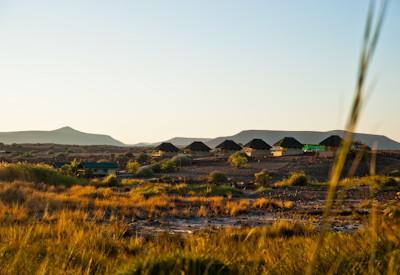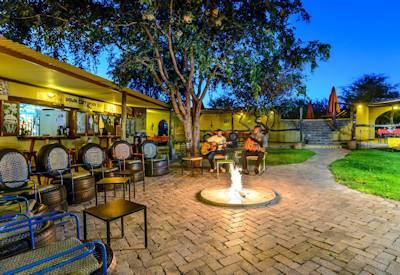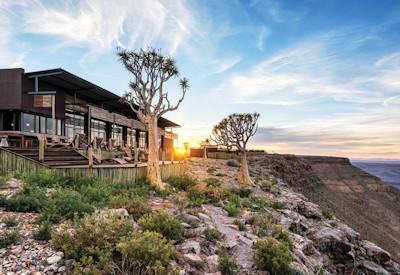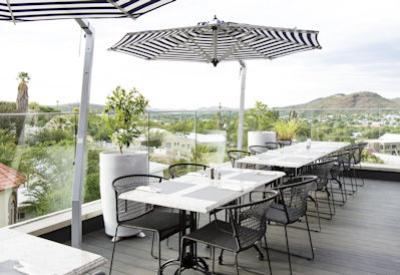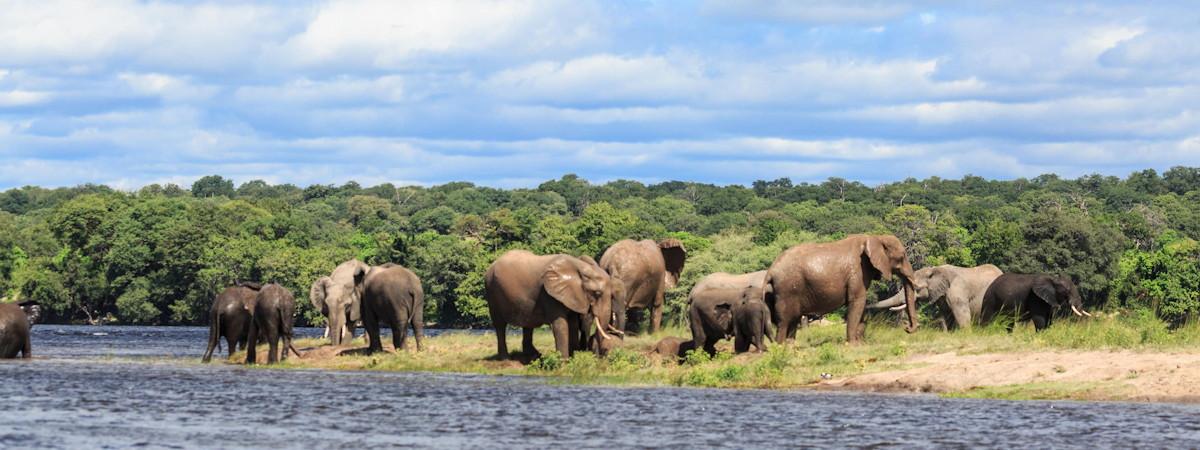
Caprivi Strip
A lush water-fed area, the narrow extension of land known as the Caprivi Strip (also known as the Zambezi region), protrudes eastwards from the extreme northeast corner of Namibia. The Caprivi borders Botswana, Angola, Zambia and, contrary to popular belief, not Zimbabwe (close, but no).
Caprivi Strip Facts
- Size: Length +- 450km, width, between 30km and 105km
- When to visit: May-Oct (cool, dry season - preferred for game viewing)
- Climate: Pleasant with avg. daily temp. at 26°C
- Rainfall: above 500mm per annum varying
- Altitude: 1000m above sea level
- Location: Top northeast corner
- Accommodation: Zambezi Region Lodges
Information On Caprivi Strip
Although the wildlife in the Caprivi has not yet recovered from years of poaching and the destructive bush war of the 1970s and 80s, it is a superb conservation area that may in the future rival Etosha and the Okavango and Selinda national Parks.
Named after Leo Graf von Caprivi, the strip was ceded to colonial Germany by the British. The Caprivi is in a tropical climate zone and receives a high amount of rainfall in the summer months.
Open throughout the year; the Caprivi region is dominated by broad-leafed deciduous woodlands comprising wild Seringa, Copal Wood and Zambezi teak. It is the wettest region in Namibia, with its high rainfall fed by a number of major rivers like the Okavango, Kwando and Zambesi.
The small town of Katima Mulilo at the eastern tip of Caprivi offers some attractive lodges, an airport, a hospital, some petrol stations, grocery stores and a street market with crafts, traditional baskets woven from grass, wood carvings, jewellery and clothes.
Malaria is an endemic, year-round problem and prophylaxis are recommended for all visitors.
Animals seen here include: buffalo, elephant, zebra, antelopes, hippo, crocodiles, lion, giraffe, puku, sitatunga, red lechwe, spotted necked otters, waterbuck, Roan antelope, Oribi, wild dog.
As many as 339 bird species have been recorded in west Caprivi.
Where is Caprivi Strip located?
Located in the far northeast corner of Namibia, in a nutshell, drive north from Windhoek and turn right at Rundu, 100 kilometres later, one arrives in the Caprivi.
To give one more of an overhead view of where the Caprivi/Zambezi Region is located, have a look at this link; Google Maps - Caprivi Strip
Best Time to Visit Caprivi Strip?
In our humble opinion, the dry winter months are the best months to travel through the region; the days are mild to warm, as are the nights. The summer months are the rainy/wet months. Although this period is excellent for birding, accessing certain areas of the national parks is prohibited by rising waters, with a very good chance of one getting stranded.
Main Attractions Of National Park
- View 4 of the 'Big 5'
- Remarkable birdlife
- Fishing and boat trips
- Access into Botswana from Namibia (and visa-versa)
- Popa Falls
- Bwabwata National Park
- Mudumu National Park
- Nkasa Rupara National Park
- Palmwag Lodge
Palmwag Lodge, without a doubt, stands as one of Namibia’s most iconic and sought-after tourist destinations. Nestled among rustling palm trees and surrounded by breathtaking scenery, this lodge offers an idyllic escape in the heart of the vast 450,000-hectare Palmwag Concession.
The wildlife in and around this private Damaraland concession and Palmwag Lodge is nothing short of extraordinary. From towering desert-adapted elephants to elusive predators and a wide variety of plains game, the experience is one of rich biodiversity.
- Ongava Tented Camp
Ongava Tented Camp, located along the southern edge of Etosha National Park in the private Ongava Game Reserve, is a premier safari destination. Featuring a blend of stone, canvas, and thatch, the camp offers an intimate experience with accommodation for just 16 guests in elegant Meru-style tents.
The camp provides excellent game viewing and guided safari drives, immersing guests in the stunning wilderness of the reserve. Ongava is one of Etosha's top lodges, offering luxury, exclusivity, and unforgettable wildlife encounters for a remarkable safari experience.
- Etosha Safari Camp
Nestled on the edge of Etosha National Park, Etosha Safari Camp offers travellers an inviting gateway to one of Namibia's most treasured wildlife sanctuaries. Surrounded by the rugged beauty of the savannah, the camp combines the spirit of adventure with the comforts of modern accommodation.
Etosha Safari Camp combines African charm with warm hospitality. Located near the Etosha National Park, guests enjoy easy access to self-drive game drives, along with amenities like a swimming pool and open-air dining.
- Le Mirage Resort & Spa
Nestled in the heart of the captivating Namib, Le Mirage Resort & Spa offers an unparalleled retreat where luxury and nature harmoniously converge. With its striking architecture resembling a castle, the Resort provides a unique escape, blending opulent comfort with stark beauty.
Guests are greeted by the endless golden dunes and vast open skies that create a serene and magical setting, perfect for relaxation and rejuvenation. This extraordinary destination promises an experience unlike any other, where every moment is steeped in tranquillity and wonder.
- Fish River Lodge
Nestled on the dramatic edge of the world's second-largest canyon, The Fish River Lodge offers a truly unforgettable Namibian escape. Located in the heart of the Fish River Canyon region, the lodge combines breathtaking natural beauty with exceptional comfort.
With panoramic views and minimalist architecture that blends into the rugged landscape, it invites guests to connect with nature in serene elegance. Its location is ideal for exploring one of Southern Africa's most remarkable geological wonders.
- The Weinberg Windhoek
The Gondwana Weinberg Windhoek, in the heart of Namibia's Windhoek region, combines luxury, comfort, and convenience for an unforgettable stay. This boutique hotel offers a serene escape with modern design, elegant decor, and warm Namibian hospitality.
Whether you're embarking on a safari, celebrating a special occasion, or simply seeking a tranquil getaway, The Gondwana Weinberg Windhoek serves as the perfect haven to begin your exploration.

